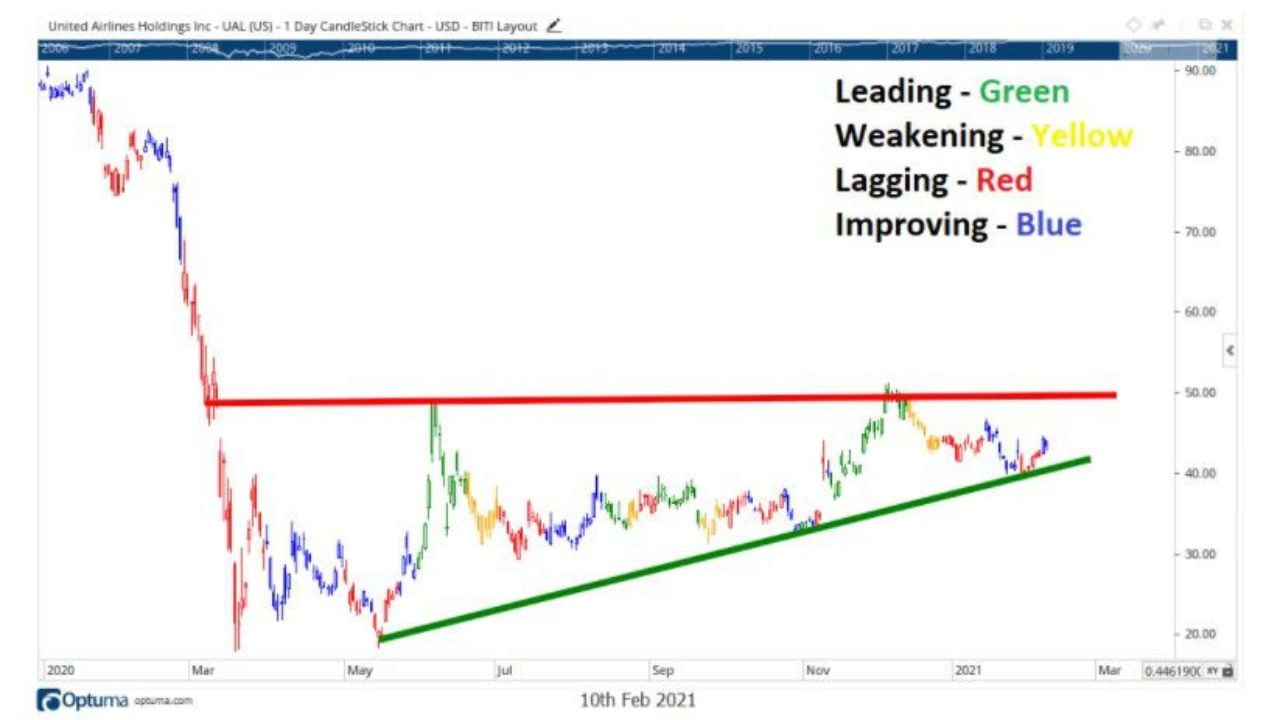Despite challenging market circumstances, United Airlines Holdings Inc. demonstrates resilience with a tiny operating income. UAL’s hub structure and strategic route network remain critical advantages in a cutthroat market. UAL’s passenger revenue is increasing despite its net deficit, suggesting it may recover. Pressure from competitors and rising operational costs pose severe concerns to UAL.

United Airlines Holdings Inc., a significant U.S. network carrier, just submitted its 10-Q report on April 17, 2024. According to the report, the firm has grown its overall operating revenue from $11,429 million in Q1 2023 to $12,539 million in Q1 2024, despite the turbulence in the aviation industry. The main factor driving this gain is the considerable increase in passenger revenue, from $10,274 million to $11,313 million. But UAL only declared a $124 million net loss, a modest reduction above the $194 million deficit they recorded the year before. The company’s financial situation is not good; although operational income increased to $99 million from a $43 million loss, nonoperating costs still hurt the bottom line.
Strengths:
- Extensive Route Network: UAL’s extensive route network, including key hubs in major U.S. cities and a focus on international and long-haul travel, remains a significant strength. This network facilitates a broad market reach and provides a competitive edge in attracting long-distance travelers. Despite the broader industry challenges, the increase in passenger revenue underscores the effectiveness of UAL’s route strategy and its ability to maintain a loyal customer base.
- Brand Equity and Alliance Participation: By joining Star Alliance, the biggest airline alliance globally, UAL fortifies its brand identity and broadens its global reach. This strategic cooperation makes shared loyalty benefits, operational efficiencies, and a more extensive flight offering possible. The company’s capacity to charge premium pricing and sustain client loyalty—both critical in a competitive market—reflects the power of its brand.
Weaknesses:
- Operating Expense Vulnerabilities: Over the year, UAL’s operating expenditures climbed from $11,472 million to $12,440 million, primarily due to increased landing fees, wages-related costs, and other expenses. This susceptibility to growing expenses might pressure profit margins, especially in a rebounding and unpredictable market. To preserve its competitive price and financial stability, the firm must closely monitor these costs.
- Debt and Interest expenditure: Considering the firm’s overall net loss situation, interest expenditure is still an issue, notwithstanding a minor drop from $486 million to $454 million. Due to its high debt levels, UAL must pay significant interest rates, which may restrict its capacity to invest in expansion prospects or withstand economic downturns.
Opportunities:
- Market Recoveries and Demand Growth: UAL can profit from the revival of travel demand as the world economy returns from the epidemic. The increase in passenger revenue suggests that the market is improving, and UAL may take advantage of this by expanding its market share via its powerful brand and route network.
- Technological Developments and Efficiency Gains: UAL can invest in technological advancements and operational efficiency to lower expenses and improve customer satisfaction. Innovations can result in long-term cost savings and increased competitiveness. Examples of these sectors include digital ticketing, automated customer support, and fuel-efficient aircraft.
Threats:
- Price Sensitivity and Competitive Pressures: The airline sector has low switching costs, a price-sensitive consumer base, and intense competition. Low-cost and established airlines pose dangers to UAL, potentially reducing market share and putting pressure on rates. To be competitive, the business has to keep differentiating its products and streamlining its costs.
- Economic Uncertainties and External Shocks: The aviation sector is vulnerable to external shocks, including health crises, volatile fuel prices, and geopolitical conflicts. These concerns, which might affect travel demand and operating costs, are brought on by UAL’s worldwide concentration. Navigating these risks requires proactive risk management and a robust financial sheet.
In summary, United Airlines Holdings Inc. has many qualities that offer a reasonable basis for expansion, such as a robust route network and significant brand equity. To strengthen its financial position, the business must address flaws, including growing operational costs and debt levels. UAL can maintain its competitive position by leveraging technology improvements and market recovery opportunities.
However, concerns about industry rivalry and economic unpredictability necessitate strategic planning and careful management. UAL’s SWOT analysis points to a business with a development potentially restrained by significant obstacles that must be carefully handled.
Read Also – Why Customer Satisfaction Looks at Management’s Every Move: Read To Know



